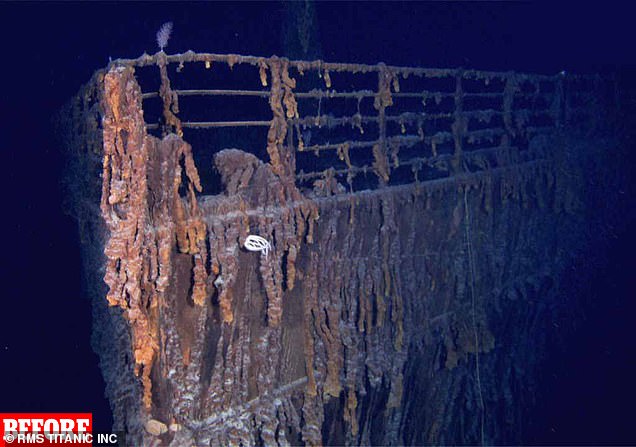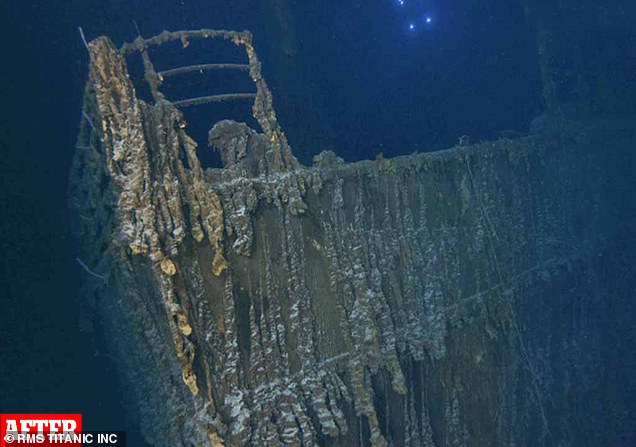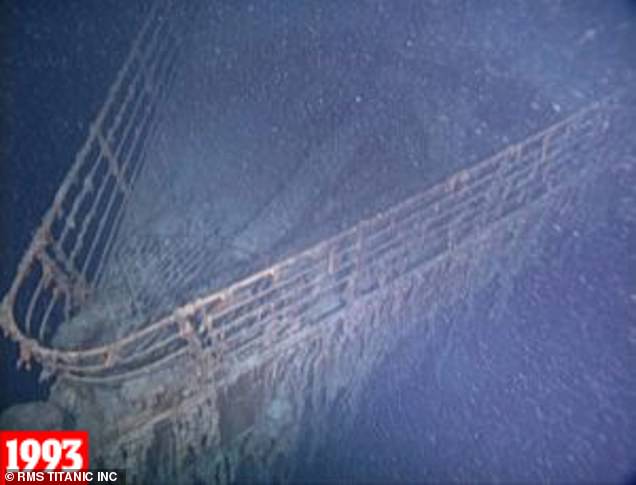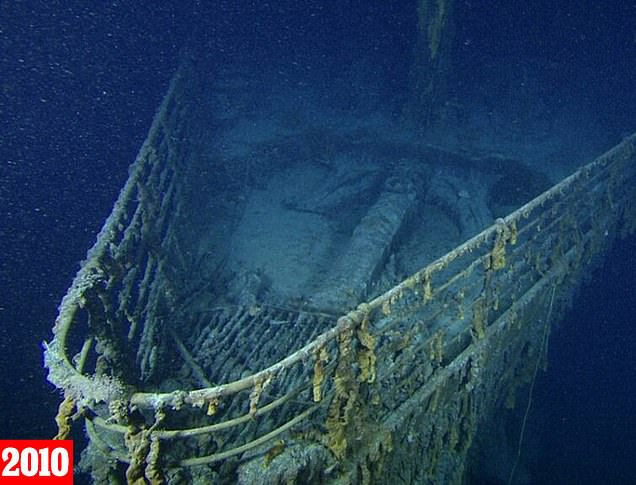The Titanic’s Deteriorating Bow Over the Past 37 Years: Devastating Footage Captured by Underwater Robots Shows How Fast the Famed Ocean Liner Is Falling Apart
Even after a century underwater, the bow of the Titanic remains one of the most impressive and mesmerizing sights in the ocean.
However, new research at the wreck site shows that the railing made famous by Jack and Rose has now rusted.
Terrifying images captured by underwater robots over the years show that the bow of the massive ship has gradually eroded.
According to experts, it is only a matter of time before the Titanic collapses, due to its metal construction and the many human visitors.
Dr Rodrigo Pacheco-Ruiz, archaeological records manager for HMS Victory and maritime archaeologist at the University of Southampton, told MailOnline: ‘The realistic view is that it’s such a large metal object and so it’s not going to be there for long.’
Haunting photos show how the Titanic’s iconic bow sank in the 37 years between 1987 and 2010
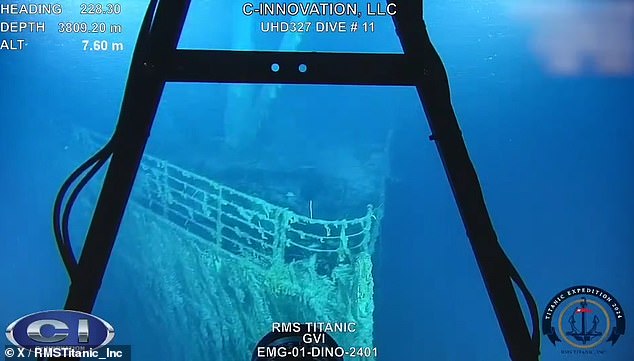
Between July and August, two ROVs descended to the Titanic and discovered that the ship’s bow is now beginning to collapse
Earlier this week, RMS Titanic Inc, the company that owns the salvage rights for the ship, released new images and footage of the sunken passenger ship.
Videos and images captured by Remote Operated Vehicles (ROVs) shockingly show how quickly the ship is deteriorating.
Most striking was that a 4.5-meter (15-foot) section of the boat’s bow railing appeared to be missing.
Later, 3D scans of the area revealed that the railing had collapsed and fallen in one piece to the ocean floor.
The Titanic sank to its current resting place on April 15, 1912, killing 1,500 passengers and crew.
Since then, it has remained virtually unchanged at 3,800 metres (12,500 feet) below the waves, at a location off the coast of Newfoundland, Canada.
An expedition to the Titanic site this summer revealed that the railings made famous by Jack and Rose in the film had collapsed sometime in the past two years

For the past 110 years, the wreck of the Titanic has lain 350 nautical miles off the coast of Newfoundland, Canada
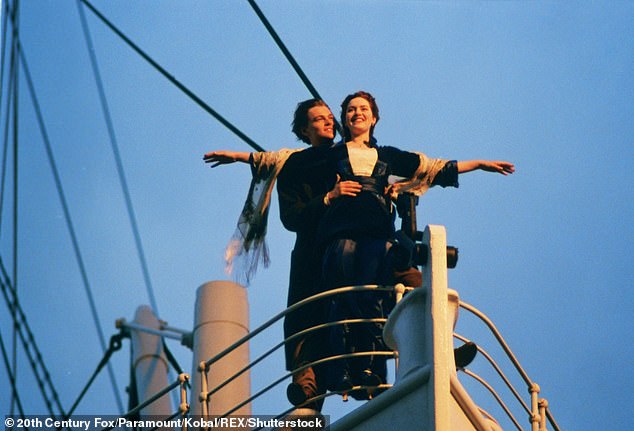
This balustrade was made famous by the scenes with Leonardo DiCaprio and Kate Winslet as Jack and Rose in the 1997 film Titanic (pictured)
When explorers first found the wreck in 1985, they were shocked to find that the railing and bow of the great ship were remarkably well preserved.
But as these photos show, each subsequent expedition to the wreck revealed more damage.
Dr. Pacheco-Ruiz explains that the salty, oxygen-rich water of the North Atlantic Ocean is particularly bad for the Titanic’s metal structure.
When the metal is exposed to this chemically active environment, the iron in the vessel oxidizes, creating thick flakes of iron oxide.
If you compare the photos from the 1990s with those from 2010, you can see how long it has taken for rust stalactites, also called ‘rusticles’, to form on the balustrade.
The Titanic’s metal construction makes it particularly vulnerable to decay in the salty waters of the North Pacific. You can see that large rust stalactites formed on the bow between 1993 (left) and 2010 (right)
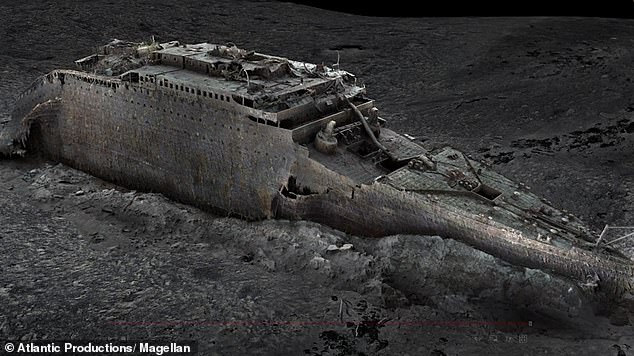
Much of the ship remains intact today, but experts warn that the wrought iron rivets holding it together are eroding extremely quickly
“That’s essentially the iron in the railing leaking out of the railing and creating layers of iron oxide, which weakens the metal,” Dr. Pacheco-Ruiz explains.
While the collapse of the front railing is sad, these photos also point to a much larger problem.
The metal plates used to build the Titanic’s hull were made of mild steel, but the rivets used to fasten them together were all made of wrought iron.
Dr. Pacheco-Ruiz says, “Wrought iron is probably one of the worst materials to have in water because it oxidizes very quickly and easily.
‘The problem with the Titanic is that everything is built with wrought iron bolts. If these bolts lose their strength, the mild steel plates will start to sag and collapse.’
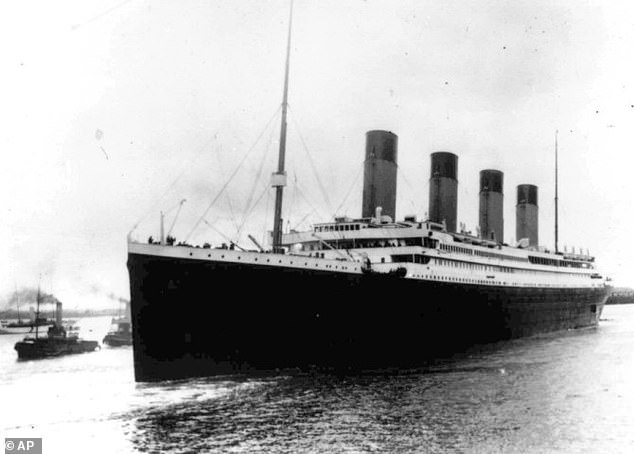
The Titanic’s mild steel plating survived the cold and darkness at the bottom of the ocean well, but experts say it is now more fragile than it appears
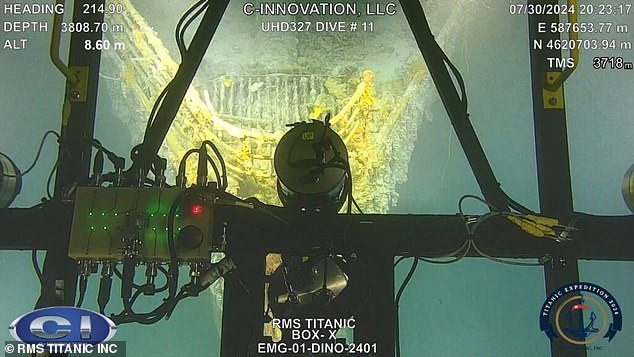
Continued visits to the Titanic’s wreck site could hasten the ship’s demise as changes in the water column push and pull on the fragile structure.
Since 1994, RMS Titanic Inc. has held exclusive salvage rights to the wreck, making it the only organization legally permitted to salvage objects.
The company claims it has removed “thousands” of pieces from the wreck during that time, across nine separate expeditions.
In addition, approximately 250 people have visited the site as part of tourist activities such as Ocean Gate and other archaeological projects.
Although many of these expeditions are conducted to study the Titanic, the continued visits to the site only serve to hasten its eventual demise.
“Unfortunately, it is probably human intervention that is causing the most damage to the site,” said Dr. Pacheco-Ruiz.
“Our visits are very destructive because we don’t really understand the fragility of these kinds of wrecks.”
As ROVs or other submersibles navigate around the wreck, they push water over the fragile structure and as more gear is collected, contact with the ship is inevitable.
Sadly, experts say that at some point the Titanic will inevitably collapse.
Dr Pacheco-Ruiz added: ‘It’s very difficult to say when it will happen, but it’s certainly not as robust as it seems.’

